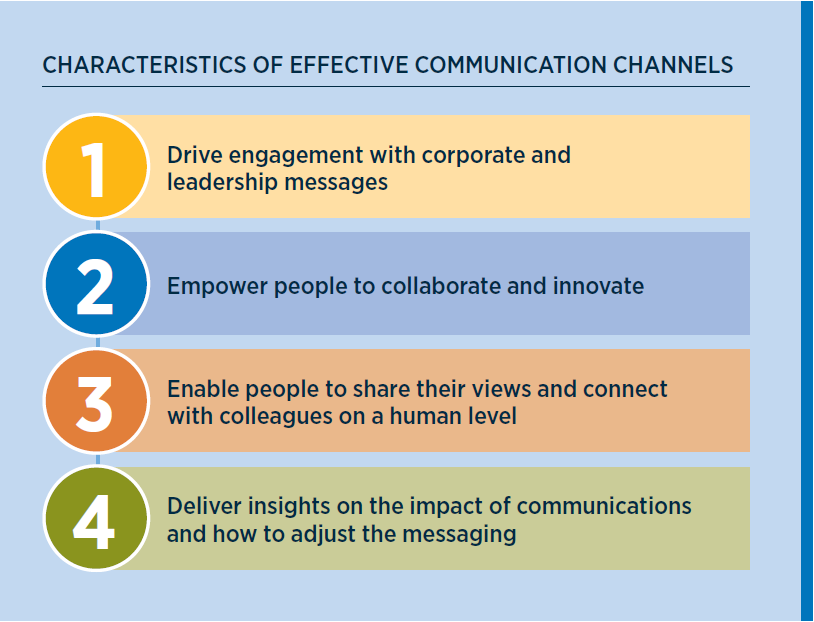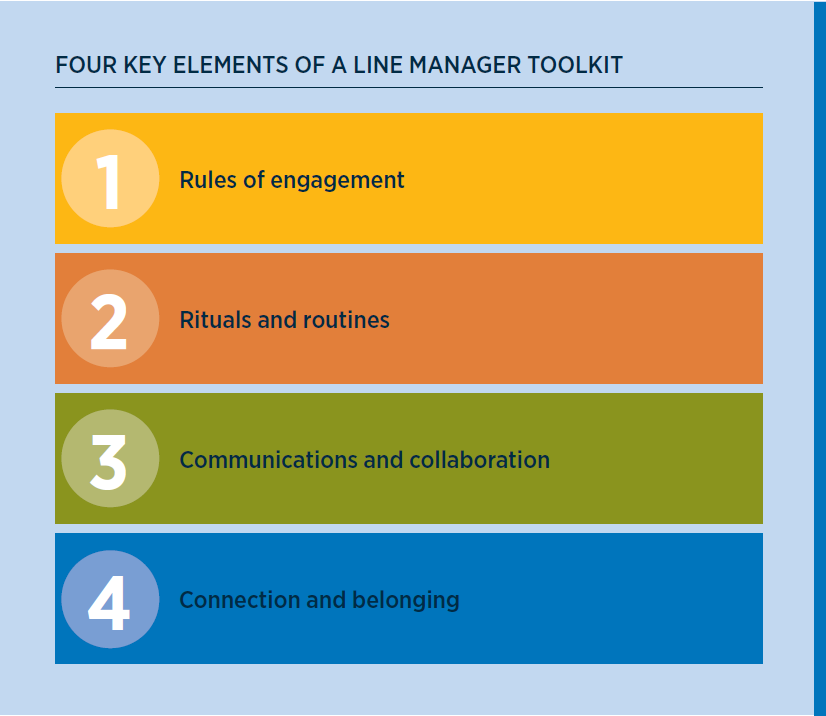
Global society is undergoing massive change. Fortuitously, the time is right for making significant strides in engaging the workforce and, in turn, shareholders, customers and the communities in which they operate. But it can’t be done on a wing and a prayer with a token budget, generic messages and overreliance on digital channels. People deserve better, and so do organisations.
Employers that can tap into the full potential of their employee base, using appropriately tailored communication channels and messages, will be the ones that hit the jackpot. They’ll be better placed to shape an EX that inspires and engages their people, by amplifying an organisational story that helps them feel different about their work. In turn, strongly increasing the odds of a prosperous and sustainable future.

A real-world sensibility for workplace communications
Communication is everywhere, but not everyone thinks they’re an effective communicator. What they may not realise is there’s no right and wrong method. Simply talking to others in a way that is authentic and real is good enough to make a meaningful connection. To date, though, anyone could be forgiven for thinking that the familiar rules of everyday communication simply don’t apply to the world of work.
In the office or working at home, people are hit with a wall of never-ending ‘noise’ that’s often difficult to distinguish, interpret and, when action is needed, prioritise. Right now, the top three barriers to communication success are: volume of communication too high (37%); poor line manager communication skills (30%); and disengaged employees (27%).1
The pandemic has forced the hands of organisations. Not long ago, senior leadership teams were comfortable with viewing communication as a discretionary spend — there today, but gone at the slightest whiff of budget needed elsewhere. But when the mass shift to homeworking started in March 2020, getting better at communicating was no longer optional.
Most rose to the challenge. Technology was a game changer in terms of reaching remote workforces. More than ever, ‘digital first’ is where it’s at, but that shouldn’t translate into ‘digital only’. Organisations are cheating themselves out of an opportunity to make a difference if they rely on one move only.
And therein lies the current problem. There were — and still are — a lot of ‘make do and mend’ attitudes. Once organisations realised the first pandemic lockdown was the start of a long haul, they should have taken a long view on communication. Yet many missed that opportunity to look at whether their people were properly equipped, channels were fit for their purpose and messages were actually landing.
Most organisations just flipped the switch on Zoom Meetings or Microsoft Teams in 2020, sat back and thought: ‘Great, we’re all ace communicators now’.
No point without relevance, empathy and meaning
Of those organisations that chose to put communications on digital autopilot, how many focused on the content as much as technology? And gave their people instruction and support on how and when to use that technology? After all, sanity may be at stake because the ability to avoid video call vacancy, fatigue and eventual burnout is not instinctive.
So the next question is about how many of those people, over a year on and with no obvious end to homeworking in sight, are a click and a swipe away from quitting and going elsewhere.
Whilst being shut inside last year brought its own pressures to bear, many people found themselves reflecting on what matters most in life. And surprise, surprise, it’s not necessarily work.
More back-to-back video calls with no room for a toilet break, let alone a coffee and chat with a colleague, were not likely added to anyone’s bucket list. Just as no one concluded they would miss the everyday experience of buffering, frozen screens, loss of connections mid-call, and endless rounds of ‘you’re on mute’.
People are prioritising a work-life balance more than ever now. And if their employer isn’t offering it, most will move on. Or worse, presenteeism will go through the roof with people just ‘languishing’; apparently the dominant emotion of 2021.2 It’s now all about ‘what’s in it for me’. And if that ‘what’ is hindering more than helping employees — the technology at work is a poor relation to the technology in their pockets — the EX and retention will decline.
Putting people front and centre
It’s impossible to build a business case for communication on gut feel alone. Leaders love hard data, so an audit of existing internal communications is the starting point for convincing them that an upgrade, if not an overhaul, is valuable. Now is the time for organisations to rethink how they ‘do’ communications in the decade to come.3
Proper toolkits for leaders and line managers contain the resources they need to be the storytellers and evangelisers. This role is about being authentic and putting employees at the centre of the narrative. So including tips and hints for running sessions with people, like conversation maps and jargon busters, will help equip managers for success. In fact, the use of toolkits was recently shown to raise understanding of the organisational purpose from 46% to 76%.4

Also, people like to hear from their peers. In a truly diverse and inclusive workplace, employees are empowered to have a say — to be given an opportunity to help shape a positive future for the business. The most effective salespeople sell with their ears instead of their mouths. Stated more generally, the best conversationalists are the best listeners. So it’s helpful to factor in ways and means to listen on a regular basis.
Thinking of employees as customers is a productive perspective.
To ensure a great EX, look at how tech companies approach the customer experience (CX). What they have in common is a dedication to human insight and an unwavering focus on the end user, and that’s what it takes to stand out in any market, including the workplace where people must be won over every day. The great thing about most digital channels is they already have lots of built-in functionality to help drive the EX.5
But it’s important to avoid a reliance on digital sources for metrics. Views, opens and clicks are part of a bigger picture that comes into focus when sources of high-value people data from around the business are tapped. That’s the way to get a richer view of the EX.1
Whatever the EX means to the workforce is what will mean to the organisation. It has to be people first. And it’s never a job done. Organisations can completely ‘nail it’ in the moment when pursuing business goals, but there’s a constant need to reinvent, redefine and rebuild their approach. The same goes for communication. This is what better looks like.
1. Gallagher, ‘State of the Sector 2021’, February 2021
2. The New York Times, ‘There’s a name for the blah you’re feeling: It’s called languishing’, April 2021
3. Gallagher, ‘The secrets to IC audit success (you can thank us later!)’, March 2021
4. Gallagher, ‘Engaging people through structured conversation’, March 2021
5. Gallagher, ‘What internal communication can learn from CX’, December 2020


